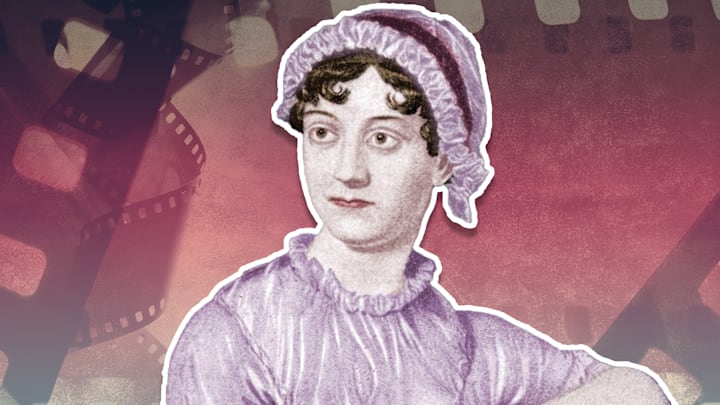It is a truth universally acknowledged that any major literary anniversary must result in a clutch of starry new adaptations. This has certainly been the case for Jane Austen, for whom 2025 marks the 250th anniversary of her birth: First up, Netflix has announced a new six-part limited series based on what is perhaps the author’s best-loved novel, Pride and Prejudice, with a script penned by beloved bestselling author Dolly Alderton. Emma Corrin is set to star as Elizabeth Bennet alongside Jack Lowden as the first ginger Darcy, while Oscar-winner Olivia Colman will doubtlessly steal every scene she’s in as the incorrigible Mrs. Bennet.
Audible Studios has also announced a new Pride and Prejudice—this time an audio drama starring Marisa Abela and Harris Dickinson as the romantic leads, with an extended cast featuring Glenn Close, Jessie Buckley, and Will Poulter. Meanwhile, Working Title (the producers behind 2005’s Pride and Prejudice and 2020’s Emma.) have announced a new adaptation of Sense and Sensibility starring Daisy Edgar-Jones, presumably as one of the two Dashwood sisters—but will she be steadfast Elinor, or flighty Marianne?
While we wait to find out, let’s take a look at five of the greatest Austen adaptations already in existence.
- Pride and Prejudice (1995)
- Clueless (1995)
- Sense and Sensibility (1995)
- Bridget Jones’ Diary (2001)
- Pride & Prejudice (2005)
Pride and Prejudice (1995)
The year 1995 was a big one for Austen, and this BBC miniseries, penned by Andrew Davies and starring a luminous Jennifer Ehle as Lizzie alongside the strappingly handsome Colin Firth as Mr. Darcy, had a lot to do with it. For many, it remains something of an urtext when it comes to screening Pride and Prejudice; the standard every subsequent adaptation must measure itself against (take note, Ms. Alderton).
On airing, it was wildly popular, sparking an obsession in viewers that the papers dubbed “Austenmania,” and catapulting Firth’s Darcy into the position of ultimate heartthrob—particularly after episode four, which sees him dive carefree into a lake on the grounds of his estate, Pemberley, only to immediately run into Lizzie and be forced to exchange awkward niceties whilst his dripping wet shirt clings to his chest. Oh, the sexual tension!
Clueless (1995)
Originally intended as a TV show, Amy Heckerling’s exuberant teen rom-com takes Austen’s 1815 novel Emma, about a young heiress who causes chaos in her local community with her misguided matchmaking attempts, and transplants the tale to a then-contemporary high school in Beverly Hills, California. The result—in the parlance of the piece—is, like, totally iconic.
Alicia Silverstone’s Cher Horowitz (Emma Woodhouse’s ’90s analogue) is warm and (sometimes unintentionally) witty even while being almost entirely self-absorbed, is endlessly quotable, and, thanks to her ultra-high-tech wardrobe app, always impeccably dressed. Indeed, the film’s styling (short, preppy skirts, knee-high socks, and a lot of plaid), which was intended to contrast with the then-popular grunge look, had a huge impact on ’90s fashion and continued to inspire designers well into the 21st century. Is this, like, a Noxema commercial, or what?
Sense and Sensibility (1995)
Another 1995 release that fueled Austen’s resurging popularity and helped earn her the moniker of “hottest writer in Hollywood,” Ang Lee’s beautiful interpretation of Austen’s debut novel was both a huge critical and commercial success.
Much of this was surely due to Emma Thompson’s brilliant screenplay—for which she received an Academy Award—which perfectly balances the wit, warmth, and romance of Austen’s original text. “I realized with the process of adaptation,” Thompson told BAFTA in 2013, “is that the powerful things in a book that you need to release onto film are sometimes not found in the book, because it’s a very mysterious journey.” Thompson also starred in the film as Elinor Dashwood, alongside a pitch-perfect British cast, including Hugh Grant, Alan Rickman, and a young Kate Winslet. Sumptuous.
Bridget Jones’ Diary (2001)
“I did steal the plot from Pride and Prejudice,” Bridget Jones’ Diary author and screenwriter Helen Fielding told the BBC in 2016; “I thought it had been very well market-researched for a number of centuries.” However, the film arguably owes as much to the 1995 BBC miniseries as it does Austen’s original text: It was watching the series and its accompanying fandom unfold whilst writing that inspired Fielding to adopt Austen’s plot.
When she adapted her novel for the screen, Fielding actually worked with Pride and Prejudice’s screenwriter, Andrew Davies, on the script, and during the film, we see a dejected Bridget repeatedly rewinding and rewatching the infamous lake scene from the miniseries. There was only ever one actor who could take on the role of Bridget’s love interest, Mark Darcy (is that name a coincidence? No, it is not): Colin Firth, playing—as described by The Guardian on the film’s release—“an ironic spoof of himself as the brooding romantic lead.” Meta perfection.
Pride & Prejudice (2005)
The cast of Joe Wright’s 2005 adaptation is truly stellar: a young Keira Knightly and a pre-Succession Matthew Macfadyen as Elizabeth and Darcy, with an impressive roster of supporting players including such future stars as Rosamund Pike, Carey Mulligan, Rupert Friend, and Tallulah Riley, as well very-much-already-established stars Donald Sutherland and Judi Dench.
Director Wright and screenwriter Deborah Moggach chose to set their film in the late 18th century, when Austen wrote Pride and Prejudice, rather than the early 19th century, when it was published. This is reflected in softer costuming and set design, which in turn reflects a less arch and more heartfelt tone than is found in many Austen adaptations (or, one might argue, in Austen’s own text). With its windswept vistas and muddy fields, the film certainly leans into the brooding romance of Austen’s story. The result is spellbinding.
Read More About Jane Austen:
